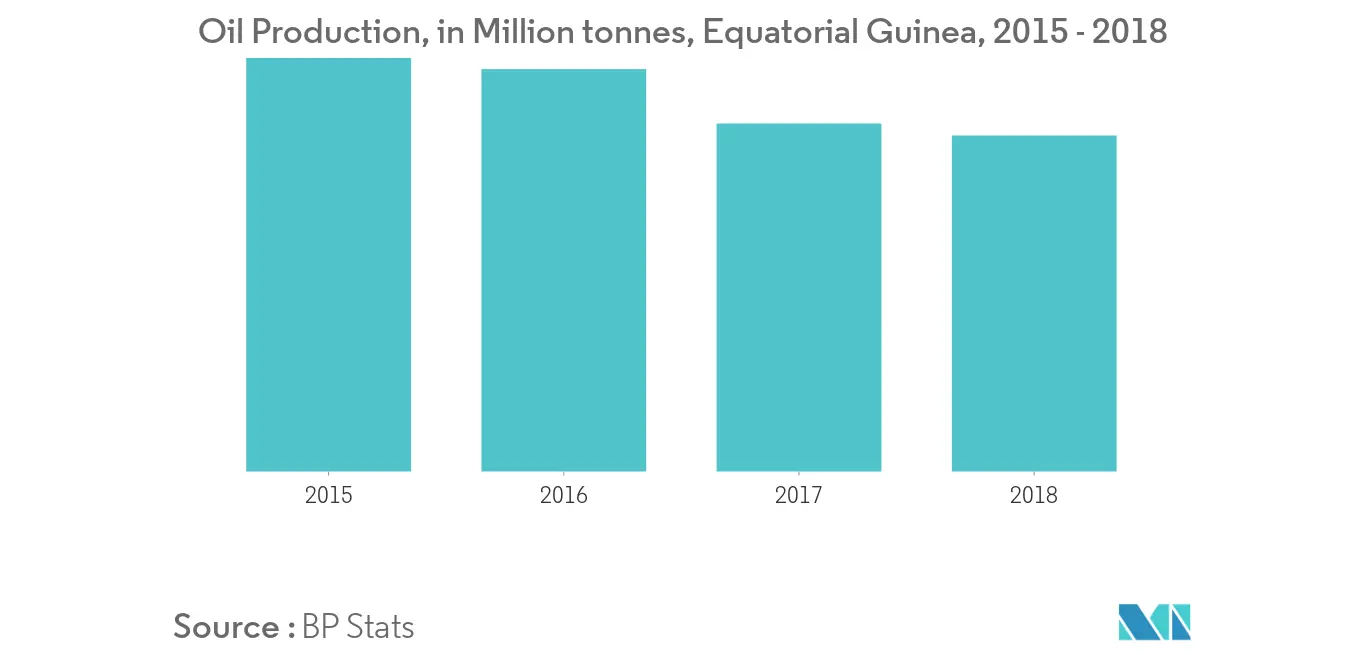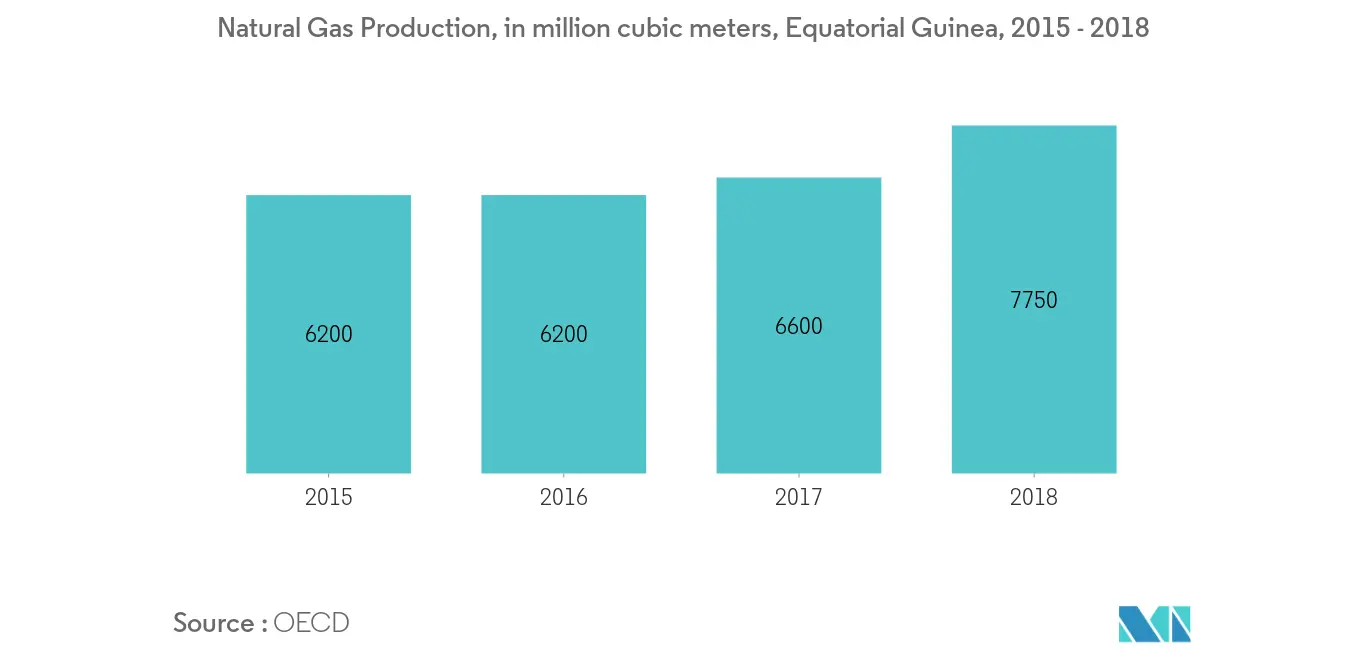Market Trends of Equatorial Guinea Oil and Gas Downstream Industry
This section covers the major market trends shaping the Equatorial Guinea Oil & Gas Downstream Market according to our research experts:
Growth of Petrochemicals Plants to Remain Stagnant
- The government of Equatorial Guinea has been reliant upon the direct sale of crude oil and natural gas to profit from the oil and gas market. The downstream sector, therefore, did not increase in the country.
- In 2019, Bioko Methanol Plant operated by the Atlantic Methanol Production Company Consortium. It takes 115 mmcfd of natural gas from the Alba Field and produces 20,000 barrels per day. It is the only petrochemical plant in the country.
- Oil production in the country decreased from 9 million metric ton, in 2017 to 8.7 million metric ton, in 2018. The decrease in the production of oil is primarily due to the maturing of the oil fields in the country.
- Hence, the petrochemical sector's growth is expected to remain stagnant in the forecast period, due to no new investment being made into the sector.

Investment in the Downstream Sector to Drive the Market
- In 2019, according to the Minister of Mines and Hydrocarbons, two new refineries, being proposed, would process approximately 35,000 per day (bpd) of crude oil including from the key Zafiro offshore field.
- The government has announced plans to construct a 20,000 b/d refinery in Mbini, but in 2019, the refinery has not been started to get constructed.
- The production of gas in Equatorial Guinea increased significantly by 5.73% Y-o-Y, from 6200 million cubic meters, in 2015 to 7750 million cubic meters in 2018. An increase in the production of gas has helped the country to become a large net exporter of natural gas.
- The Equatorial Guinea oil and gas downstream sector is expected to grow significantly in the forecast period, due to an increase in gas production and proposed new investment taking place in the country.


